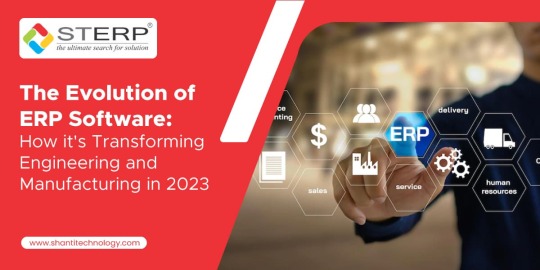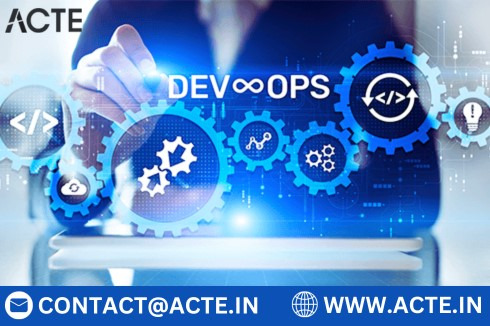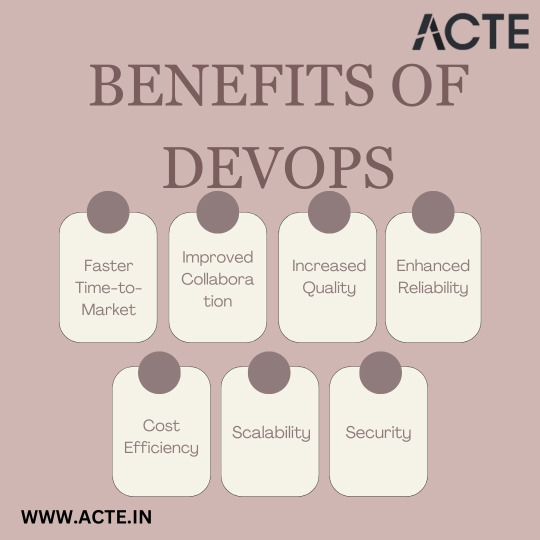#agile fundamental blog
Explore tagged Tumblr posts
Text
so one der wolfsjäger playlist,tag scrolling through escaped blog,5.5 notebook pages and 4 highlighters later i present
Der Wolfsjäger world building (aka types of werewolves/hounds)
all of this is directly taken from der Wolfsjäger playlist in the channel and from the lore offered here on his blog under "der Wolfsjäger" tag so far, this will be updated everytime we get new lore about the werewolves/hounds
you can correct me if you find any mistakes of what I said just please provide the source that you got the correction from and it has to be by escaped
first kind we meet and are interduced to isn't a werewolf but a dog/a hound,moon light hounds/Mondscheinhunde
these include WeißssHund and Gerald so far, they are very special dogs,they are huge in size,bigger than normal dogs and wolves, they understand human language and human emotion,their bite is harmful to werewolves, vampires ,miseries and other kinds of monsters,only their bite and silver wounds don't heal when the werewolves shift back into humans, they find their hunters naturally
→they come from a Reißzhan_rut (not sure if i typed that correctly)father and a human mother (impregnated by the father in his human form) they stay in human form until the ages 5-6 and they look like strange kids with silver hair and animal behavior and they don't speak,on one particular moon they transform into their hound form and are set to look for their fathers to (try) and kill them, abandoning their mothers, they chose a master who is a hunter and they bound to them for life,you become a real werewolf hunter when one of them chose you
-absolutely hated by all kinds of werewolves, they looks like wolves , aren't wolves,they understand their language, don't speak it,track and hunt their werewolf parents then bound with their enemies,and their bite is harmful to them and they don't know why, the werewolves are terrified of them, they are monsters of monsters
2. Moundheulers
-most common type of werewolves,cursed humans that transform into wolves, they have a strong uncontrollable bloodlust,in and out of their wolf form, enjoy Violence and likes killing humans which are their primary source of food, they kill in and out of moonlight, most likely to become serial killers and cannibals,the older they get the more powerful they become, they gain power every moon circle,and the older of them have the ability to transform under half-moon light,like goresume art as humans
"wolves that become man,wolves that speak ,has the mind of a man towers over 2 meters tall"
unless injured by sliver or by a moonlight hound bite,their wounds will regenerate the moment they shift back to humans
very agile creatures with weird bone structure,look like deformed monstrosities , with deadly claws
they have temporary control of their transformations, they don't transform at the first sight of moonlight,hence they can control where and when to turn to an extent
Fundamentally very smart but not because lycanthropy makes them smarter,but it cures fatigue, depression, chemical addictions,and gives their cursed a lot of motivation which make them feel and seem smarter
Johanne claimed to be a bestienkönig and those are of Reißzhan-Wut
they can't make new relationships after they turn,at least they can't fall in love anymore,but will maintain relationships before they've been bitten (for example: Johanne with his wife)
edit: Mondheulers don't stand on two legs, those are the Blutschreibers. Mondheulers are quadrupedal.
→ are a different type of werewolves, their primary source of food isn't humans,but they still hate them and will kill them (by eating them alive from the feet up and enjoy the sound of human suffering,will wear their victims teeth and bones on their necks)
they don't need moonlight to be wolves,they are born as and of wolves, hardly take human form,when they do , they are mostly nude and only adorned in their paint and jewelry
they see themselves as nobility-like of the wolves and distance themselves form humans, are almost always in packs and are tribe-like in my opinion
they are strong and big as bears,can be reasoned with and much smarter then humans,
they are the fear of the unknown and forbidden, everything around them feels like a warning, the forests get darker when you are nearing them, you forget how you got there, it turns into night-like scenery the closer that you to them even if it's the middle of the day, if you get close enough you might hear singing, of chanting and howls while everything else goes quiet a from normal birds chirping to sounds of normal forests it disappears and you could only hear them and the Wind
in wolf form they look like imposing animals with human eyes, they look at you with conscious intent almost like they're reading your mind, like they know everything about you but you cannot know a thing about them and they will kill you to keep it as such
very rare to see because almost everyone who did see them have been killed
they bear crazy names like smoke and rampage because they are very tribal and they distance themselves from humans, in Europe and Northern Asia they are always in packs, anywhere else they are almost 100% Renegades / outcasts
→as renegades/outcasts they are a problem to all werewolf types because if they are alone they are seeking humanity when they Rebel and, if they have kids (which are most likely to have violated the other parent) there's a 50% chance it's not a human and it's a Moonlight hound
unlike moundheulers, they might fall in love with a human
bestienkönigs are a folk lore prophecy of theirs, it's prophecy that it's a wolf that is the strongest being and will end humanity
Reißzhan-Wut can kinda stand on their hind legs, but they stand kind of the way bears do.
this kind of werewolves are not turned by biting or anything like that they are actually haunted by terrifying spirits
3. Blutschreibers
they are very intelligent cruel and very strong they are capable of blending in with society and they hold malice for All mankind
they can turn at will they are extremely rare
and they have two forms other than their human form,they can look like normal wild wolves or a bipedal form
they are chosen as children by evil spirits
The only fully bipedal wolves are Blutschreibers.
extra notes
-all of these have an uncanny Valley sensation except for Sombra desesda which are a type of vampires that blend seamlessly with humans
-all werewolves have two mouths one that speaks a human language that one is tied to only the lungs and their werewolves mouth which is tied to their lungs and to their stomachs which makes the growl noises
25 notes
·
View notes
Text

🔴 𝐏𝐢𝐧𝐧𝐞𝐝 𝐏𝐨𝐬𝐭 || 𝐀𝐜𝐞 𝐖𝐚𝐲𝐧𝐞 / 𝐋𝐢𝐭𝐭𝐥𝐞 𝐑𝐞𝐝 🔴
"Gotham’s got enough Bat-themed vigilantes. Time for something a little different."
💀 𝐂𝐡𝐚𝐫𝐚𝐜𝐭𝐞𝐫 𝐈𝐧𝐟𝐨
🔹 Name: Ace Wayne 🔹 Alias: Little Red 🔹 Gender: Nonbinary 🔹sexuality: Bisexual 🔹 Pronouns: He/they 🔹 Age: 20 🔹 Affiliation: Batfamily (Unofficially), Gotham Vigilantes 🔹 Powers: Universal Manipulation – The ability to manipulate fundamental forces of reality, time, space, and matter on a cosmic scale. 🔹 Personality: Stubborn, loyal, reckless but strategic, resourceful, protective over those he cares about.

━━ ✦ 𝐁𝐚𝐜𝐤𝐠𝐫𝐨𝐮𝐧𝐝 ✦ ━━
🔹 Former Robin—same instincts, sharper edges.
🔹 Mobility’s fluid—legs, wheels, whatever gets the job done.
🔹 Tactician, hacker, strategist—if there’s a fight, he already knows how to win it.
🔹 Still throws a mean punch—you won’t see it coming. 🔹 Unpredictable—never know which side he'll land on, but you can bet it'll be one hell of a ride. 🔹 Master of illusions—whether it's visual or mental, he can mess with your head without breaking a sweat. 🔹 Infiltration expert—blending in or creating distractions, he can get in or out unnoticed. 🔹 Dual-wielding expert—one weapon in each hand, both deadly and precise. 🔹 Always thinking two steps ahead—it's not just about reacting, it's about knowing where the game is going. 🔹 Highly adaptable—throw any challenge at him, and he’ll find a way to turn it into an advantage. 🔹 Non-linear thinking—time doesn’t bind him, and neither do rules; he sees all possibilities. 🔹 Emotional manipulator—can make you feel exactly what he wants you to, or make you doubt what you feel. 🔹 Fearless—he's seen the worst timelines, faced unimaginable odds, and still keeps going. 🔹 Loyal... when he chooses to be—cross him, and he’ll become your worst nightmare.

━━ ✦ 𝐋𝐢𝐭𝐭𝐥𝐞 𝐑𝐞𝐝’𝐬 𝐕𝐢𝐠𝐢𝐥𝐚𝐧𝐭𝐞 𝐎𝐮𝐭𝐟𝐢𝐭 ✦ ━━
🔹 Base Suit: A sleek, reinforced bodysuit in deep midnight blue with black paneling, designed for flexibility and protection. The fabric is lightweight yet durable, with hidden armor plating in key areas (like the chest, shoulders, and shins) to absorb impact without limiting movement. 🔹 Jacket: A short, asymmetrical tactical coat with a high collar, dark with subtle wing-like patterns stitched into the fabric. It’s lined with lightweight Kevlar weave, offering extra defense. The sleeves are detachable for when he needs more mobility. 🔹 Gloves: Fingerless tactical gloves with reinforced knuckles, offering a better grip for climbing and close-quarters combat. The palms have shock-absorbing gel to reduce strain on his hands. 🔹 Utility Belt: A matte black utility belt loaded with hacking tools, smoke pellets, throwing knives, and emergency medical supplies. There’s a grappling hook device secured on the side for quick escapes. 🔹 Mask: A sleek domino mask with a built-in HUD display, night vision, and encrypted comms. The eyes glow a soft blue when scanning surroundings. 🔹 Boots: Flexible, lightweight combat boots with reinforced soles for shock absorption—perfect for both rooftop chases and silent movement. The bottom has magnetic grips for scaling metal surfaces. 🔹 Cape/No Cape: Instead of a full cape, two streamlined, retractable "wing" panels are built into the back of the jacket. When activated, they function as a glider system for controlled aerial movement. 🔹 Wheelchair Integration: On nights where Ace needs his wheelchair, it’s a custom-built, high-tech model designed for speed, agility, and combat. It has hidden compartments for gadgets, reinforced plating for defense, and an adaptive control system for smooth movement. 🔹 Symbol: A small, silver wing emblem on the left side of the chest—subtle, but unmistakable.
📜 𝐑𝐮𝐥𝐞𝐬
🔹 No NSFW. This is a minor-run blog. Don’t be weird. 🔹 Be respectful. Hate, bigotry, or drama aren’t welcome here. 🔹 Ask before major plots. If you want to do something big (major injury, betrayal, etc.), let's discuss it first. 🔹 Triggers will be tagged. If you need something specific tagged, let me know. 🔹 Patience is key. Replies might be slow because of school, life, etc. Please don’t spam. 🔹 Crossovers welcome! DC-focused, but I’m open to AUs and multiverse interactions. 🔹 OOC drama stays out. If there’s an issue, let’s handle it respectfully. 🔹 No god-modding or force-playing. My character is mine, your character is yours—let’s keep it fair.

💬 𝐀𝐛𝐨𝐮𝐭 𝐓𝐡𝐢𝐬 𝐌𝐨𝐝
✦ Name: Astro ✦ Pronouns: He/They/+Neopronouns ✦ Timezone: EST ✦ DMs: Open (ask first, please!) ✦ Btw, this mod is a minor—no NSFW or anything like that.
Feel free to reach out if you'd like to plot or chat! This blog is a safe space for creativity and connection. Also, just a heads-up: I’m in school Monday-Friday, so I might not always be on to answer messages right away. Thanks for understanding! 💜

📌 𝐄𝐱𝐭𝐫𝐚 𝐍𝐨𝐭𝐞𝐬 🔹 I love in-depth character interactions and long-term story arcs—if you’re interested in building something with our muses, hit me up! 🔹 Open to both serious and lighthearted threads—one moment we’re strategizing a mission, the next we’re arguing over pizza toppings. 🔹 If I ever take a while to reply, it’s nothing personal! Feel free to nudge me if I’ve missed something. 🔹 AUs, crossovers, and multi-thread storytelling are totally welcome—let’s get creative!

7 notes
·
View notes
Note
Would you say Great Sage Who Travels with the Wind is the most correct translation? I’m aware that Informing Wind is another way it can be translated.
It's important to look at all of the sworn brothers' names as a whole when asking this question. Each monster is listed according to their accepted rank:
Bull Demon King - "Great Sage Level with Heaven" (Pingtian dasheng, 平天大聖).
Dragon Demon King - "Great Sage Upsetting the Ocean" (Fuhai dasheng, 覆海大聖)
Peng Demon King - "Great Sage Confusing Heaven" (Huntian dasheng, 混天大聖)
Lion (Demon) King - "Great Sage Moving Mountains" (Yishan dasheng, 移山大聖)
Macaque (Demon) King - see below
Golden-Haired Monkey (Demon) King - "Great Sage Expelling Gods" (Qushen dasheng, 驅神大聖)
Sun Wukong - "Great Sage Equaling Heaven" (Qitian dasheng, 齊天大聖)
Apart from Monkey and the Bull Demon King, you'll notice that the chosen names involve some sort of great feat of power, such as upsetting the ocean, moving mountains, expelling gods, etc.
The Macaque King's name Tongfeng dasheng (通風大聖) can mean either "Traveling or Informing Wind." But given the feats above, I think "Traveling with the Wind" is the best translation because it speaks to amazing speed.

Image found here.
Edit (07-14-23)
My friend Irwen Wong over at the Journey to the West Library blog gave me his own answer to this question.
I just saw your post ... and I think translating it as "travelling with the wind" because of agility or speed is a very good possibility. But I wanna share my view as well. I really like Anthony C. Yu's translation "informing wind," which would suggest high intelligence, wit and resourcefulness as the "feat of power" that you've noticed in the great sage names. 通 means to "pass through", "connect" or "be open to". 風 obviously translates most directly as wind, however it can also mean "custom" or "culture" as in 風俗, and also "news" as in "getting wind of something" (which works in Chinese too). Like I said previously, the name would suggest high intelligence, wit and resourcefulness as feats of power for this particular great sage, which we can see in the Six Eared Macaque as an example. The Buddha introduces the macaque as: A sensitive ear, Discernment of fundamental principles, Knowledge of past and future, And comprehension of all things. This could suggest that the Macaque King has powers similar to Six Ears, being highly knowledgeable of all affairs in the universe due to high alert or having abilities to be so resourcefully informed. And you obviously know that it's a very common theory that Six Ears and the Macaque King are the same character.
So, I'll leave it up to the reader to accept which view they like.
#Sun Wukong#Monkey King#Journey to the West#JTTW#lmk brotherhood#Lego Monkie Kid#LMK#MK#Six Ears#six eared macaque
100 notes
·
View notes
Text
SKY VROOM-VROOM GO BRR.
Amidst the last few months' craziness, what hasn't failed me or the polycule is our stashing cash aside since after we came back from the Dominican Republic, earlier last year. The end-result is that we're headed to Cuba, now, starting tomorrow.
In case American friends of the blog read this, there's no switch planned in Florida, no stop anywhere on US soil. We're boarding a three-hour flight from Montreal to Cuba and have a week planned in Cayo Coco. Steve and Scrooge can handle things in our absence, and the, for the lack of a better term, gremlings I've been training will probably be more agile than Sarah or myself could ever be with our IT resources, on our own.
Oh, and the Old Place? Officially gone, as per the grapevine. They've been swallowed up in a merger and carried most of my former colleagues over. I retraced those that weren't, asked them if they were on the market for a job, and Walt and I swiped them up.
The Old Place's CEO met with us on Teams, and I've never seen a man look so defeated, before. "I keep telling them there's no future in Sales, not until the Americans return to their senses, and they're not listening. The merger already cost them an arm and a leg, and they're already hemorrhaging cash...
I hummed. "That's a familiar story, somehow..."
Old CEO gave me a look that was too haggard to properly wither - much less to wither me. "The first boss died on a bike trail, the second one threw in the towel and I can't see how I could've done better, Grem!"
Sarah shrugged. "We did tell you to put less weight on the Sales team, the post-COVID market is one of the worst fields ever for someone looking to book car buybacks - and now there's Trump and his tariffs. Until something fundamentally changes, there is no bear market in the automotive sector. None whatsoever."
Walt shrugged. "Besides, you're out of it, now. Wash your hands, proverbially speaking, give yourself a month off, and then pick up a Servicing franchise. You'll live steady."
Old CEO sighed. "That isn't what I wanted..."
Yeah, well... As the physician House once remarked of the great philosopher Jagger, you can't always get what you want...
As we hung up the call, Walt gave us a look. "You ever seen that stunt move in a few movies, where someone dodges an attack or a bullet or something, rolls forward, then pulls themselves back up without missing a beat? I feel like this is us, lately."
I sipped at my coffee. "We could always professionally bite it, some day. We're lucid now, but once we're fattened by our own success, maybe we'll end up like the Old Place's first boss - dead mid-stride."
Walt chuckled. "That's my job, sport! You and Sarah are the agile ones, and I'm the one who gets to spend his twilight years in the fuzziest cocoon of success I've ever made for myself."
Sarah smirked. "Is that a Cuban preview?"
Walt winked at us. "Absolutely, my friends. My idea of vacation is finding a shady spot by a few palm fronds to fall asleep in, and then spending all of next week just following the shade."
2 notes
·
View notes
Text
The Simulation in Ghost-Runner Through Baudrillard's Spectacle of Simulacra
BLOG 4: SIMULATION IN GAME
While exploring the wide world of video games, I became aware of an odd phenomenon: the differing levels of relatability between different games. Some felt strangely detached to me, despite being deeply rooted in or inspired by our reality. Conversely, there were some that I could really relate to that were only found in the world of fiction. Of these, Ghost-Runner stood out as an intriguing outlier. Paradoxically, it held me in a manner that few others could. It was strikingly devoid of any concrete connection to the outside world.
Until I came across the theories of Simulation and Simulacra, the mystery remained. With my newfound understanding, I set out on an analytical journey using the Spectacle of Simulacra by Jean Baudrillard as my compass. The objective was to ascertain what in Ghost-Runner's virtual world prompted such a feeling of familiarity. Come along as we investigate the relationship between philosophy and gaming, trying to find the answer to the fascinating question that has been bothering me: What aspects of the game's portrayal resonate so deeply with me?

About Ghost-Runner
Ghost-Runner is a dynamic first-person action slasher game, where players step into the shoes of an agile android ninja armed with a katana. With slick parkour-inspired moves like wall running, sliding, and time manipulation, players ascend neon cyberpunk skyscrapers, confronting foes with each potent swing. Set in a dystopian city governed by the oppressive Key-master and plagued by violence, poverty, and class inequality, players aim to reach the top, uncovering the technology to stand against enemies and revealing the secrets of their identity. This cyberpunk adventure delivers an adrenaline-fueled experience, seamlessly blending abilities and melee combat for ultimate satisfaction in a futuristic world torn by conflict.
youtube
Academic Standpoint
Two key studies have shaped my perception of how media is portrayed through simulation.
First of all, a fundamental framework is provided by Jean Baudrillard's investigation of simulacra. According to Baudrillard, reflection is exploring ideas in order to offer different points of view—basically, trying to reflect the real picture of the social or natural world that is bounded by preexisting boundaries. He breaks down the simulation process into three essential steps: simulation, which indicates copies without the original; series, which indicates copies of copies of the original; and counterfeit, which indicates copies of the original. (Grandy and Mills, 2004)
Additionally, the work of Mark J.P Wolf and Bernard Perron, outlined in their book, introduces the idea that to simulate is to model a source system through a different system while retaining some of the behavior from the original system. This perspective adds another layer to the examination of Ghost-Runner, allowing for a nuanced understanding of how the game constructs its virtual reality and the implications of this simulated environment on player experience. These academic foundations serve as guideposts in unraveling the intricacies of Ghost-Runner's portrayal and its alignment with theories surrounding simulation in media studies. (Perron and Wolf, 2013)
Noticeable Game Features and Analysis
In dissecting the notable features of Ghost-Runner, various elements come to the fore, providing rich material for analysis.
Cultural Reference Points

Swords and Katana
The game uses swords and katanas that are typically associated with ronin or samurais, drawing inspiration from the rich cultural history of mediaeval Japan. This representation, which was assembled from various video games, websites, and gaming platforms, turns historical allusions into entertaining content for viewers.
Conceptual Synonymity

Self-Sufficient Building
The primary theme centers on an autonomous building, a notion that finds resonance in the ongoing development of The Line in Saudi Arabia, which is an independent city housed inside a structure. This real-world parallel fits with modern architectural advancements and lends credibility to the game's story.
Hierarchy within the Building
The in-game societal organization is conceptually underpinned by the hierarchical settlement of elites on upper floors and the less fortunate on lower levels, which is modelled after historical social structures such as the French feudal system or the Hindu caste system.
Hyper-real Environment

Japanese Elements
The backdrop, which has a lot of Japanese aesthetics and is reminiscent of Cyberpunk 2077, is another example of how various media forms work together to create an environment that seems extremely real. The gaming experience is enhanced by this intertextuality.
Post-apocalyptic Elements
The post-apocalyptic setting, a recurring motif in television shows and films like Wall-E and The Walking Dead, adds to the hyper-real setting by portraying a world that has been completely destroyed and altered by terrible events.
Simulated Identities

Android Protagonist
The game joins the conversation about human-machine hybrids by introducing an android protagonist. With allusions to a variety of media, including Iron Man, Chappie, Terminator, DC Cyborg, and Chappie, Ghost-Runner delves into the complex effects of technological progress on identity.
Prosthetic Limbs
The development of prosthetic limbs in real life serves as the basis for the animation of the hand in the first-person perspective. This integration bridges the gap between speculative fiction and current technological possibilities and gives the character an additional layer of authenticity.
Conclusion

Essentially, Ghost-Runner is a game that goes beyond traditional gaming experiences because it skillfully combines historical, cultural, and hyper-real elements. It does this by providing an insightful journey that can be viewed through the prism of Jean Baudrillard's Spectacle of Simulacra. The game creates a visually stunning and emotionally impactful hyper-real environment by fusing references to mediaeval Japan with a post-apocalyptic, futuristic story. From a conceptual standpoint, Ghost-Runner draws inspiration from actual events, like Saudi Arabia's The Line, which gives the story more plausibility. The game's artificial intelligence (AI)-driven hierarchy and exploration of simulated identities, which include an android protagonist and prosthetic limbs are modelled after historical counterparts. In addition to being a game, Ghost-Runner is a sophisticated investigation of simulation and reality that challenges players to consider how the boundaries between the virtual and the real might become hazier in the constantly changing world of digital storytelling.
Reference
Grandy, G. and Mills, A.J. (2004) 'Strategy as Simulacra? A radical reflexive look at the discipline and practice of strategy*,' Journal of Management Studies, 41(7), pp. 1153–1170. https://doi.org/10.1111/j.1467-6486.2004.00470.x.
Perron, B. and Wolf, M.J.P. (2013) The Video Game Theory Reader, Routledge eBooks. https://doi.org/10.4324/9780203700457.
PlayStation (2020b) Ghostrunner - Launch Trailer | PS4. https://www.youtube.com/watch?v=Vt8yOLn8vmo.
#video games#gaming#game#game design#game of the year#game theory#game art#videogame#gamers#fps#ghostrunner#ps4#pc games
9 notes
·
View notes
Text
The Evolution of ERP Software: How it is Transforming Engineering and Manufacturing in 2023
In today’s dynamic world of engineering and manufacturing industry, maintaining competitiveness and operational efficiency is of paramount importance. Enterprise Resource Planning (ERP) software has become a fundamental tool for optimising processes, improving efficiency, and facilitating smooth operations in the engineering and manufacturing industries. As we progress into the year 2023, it becomes apparent that enterprise resource planning (ERP) software has experienced a substantial transformation, adapting to the unique requirements of the industry in question. Unlock the full potential of your manufacturing company with ERP software designed and developed by STERP (Shanti Technology). Contact today for a tailored ERP solution for manufacturing company in India that aligns perfectly with your business objectives.

This blog article aims to examine the growth of Enterprise Resource Planning (ERP) software and its significant impact on the fields of engineering and manufacturing.
Historical Perspective: A Brief Overview of ERP Software
The evolution of ERP software since its establishment in the 1960s has been significant, with a notable shift from its initial emphasis on inventory management and order processing. Over the course of several decades, enterprise resource planning (ERP) systems have seen significant growth and development, resulting in the integration of a wide range of corporate functions. These functions include but are not limited to accounting, human resources, procurement, and other related operations. The advancement of technology has led to the evolution of ERP software into a centralised platform that offers real-time data, enhances decision-making processes, and fosters communication across various departments within an organisation.
· Integration of IoT and Industry 4.0:
The combination of the Internet of Things (IoT) and Industry 4.0 technologies represents a notable revolution in ERP software during the year 2023. The Internet of Things (IoT) facilitates the interconnection of various devices and sensors, enabling the collection and sharing of data. This capability offers real-time insights into the industrial process. Enterprise Resource Planning (ERP) systems have the capability to effectively integrate this data, so facilitating manufacturers in making informed decisions based on data analysis and enhancing their operational efficiency.
The principles of Industry 4.0 place significant emphasis on the integration of automation, digitization, and connectivity, which have now been easily included in enterprise resource planning (ERP) software. The integration described enables enterprises to establish a smart industrial setting, increase their control of the supply chain, and optimise operational efficiency.
· Cloud-Based ERP Solutions:
Cloud-based enterprise resource planning (ERP) solutions have significantly transformed the operational landscape of enterprises. This paradigm shift can be attributed to the revolutionary impact of cloud technology on ERP software. In the year 2023, an increasing number of engineering and manufacturing companies are using cloud-based Enterprise Resource Planning (ERP) solutions. The aforementioned solutions possess several benefits, including the ability to scale, adaptability, reduced initial expenses, and convenient availability, rendering them exceedingly appealing to organisations of all sizes. Moreover, the utilisation of cloud-based enterprise resource planning (ERP) systems facilitates the instantaneous exchange of data and promotes collaboration among all parties involved, hence enhancing operational efficiency and cultivating a culture of innovation. Invest in the future of manufacturing. Choose advanced ERP software for engineering companies in India developed by STERP (Shanti Technology) to enhance agility and competitiveness.
· Advanced Analytics and Business Intelligence:
In the current business environment, data holds significant value. Enterprise Resource Planning (ERP) software has evolved to incorporate sophisticated analytics and business intelligence functionalities, enabling the generation of visually appealing data representations and the utilisation of predictive analytics techniques. Manufacturers have the ability to utilise this data in order to anticipate market trends, enhance production schedules, effectively manage inventories, and rapidly make well-informed business decisions. The utilisation of advanced analytics enables engineering and manufacturing enterprises to maintain flexibility and effectively respond to market fluctuations in a timely manner.
· Enhanced User Experience and Mobility:
The optimisation of user experience and mobility is a crucial element in contemporary enterprise resource planning (ERP) systems. In the year 2023, the primary emphasis of ERP software lies in delivering an intuitive and user-friendly interface, with the aim of facilitating smooth adoption and utilisation throughout all hierarchical levels within the organisation. Furthermore, the use of mobility enables stakeholders to conveniently access essential data and capabilities while on the move, hence enhancing productivity and facilitating informed decision-making. Stay ahead in the competitive manufacturing landscape. Reach out to an expert - STERP (Shanti Technology) - the most reliable Engineering ERP Software Company in India and elevate your business operations.
· Cybersecurity and Compliance:
The increasing prevalence of cyber risks has prompted ERP software developers to prioritise the integration of robust cybersecurity capabilities. In the year 2023, enterprise resource planning (ERP) systems place significant emphasis on the paramount importance of data security, adherence to industry laws, and the implementation of effective authentication procedures. This practice guarantees the preservation of confidential corporate information, hence cultivating a sense of trust and assurance among users.
Final Thoughts:
The evolutionary progression of Enterprise Resource Planning (ERP) software in the year 2023 signifies a significant and transformational change within the realm of engineering and manufacturing. The convergence of the Internet of Things (IoT), Industry 4.0 technologies, cloud-based solutions, sophisticated analytics, improved user experience, and heightened cybersecurity measures enables organisations to effectively streamline operations, boost efficiency, and attain long-term, environmentally conscious expansion. With the increasing use of these technological developments, the engineering and manufacturing sectors are poised to witness unparalleled levels of efficiency and creativity, hence setting a bright trajectory for the industry.
In order to remain competitive in today's ever-changing corporate landscape, it is imperative to be informed and capitalise on the capabilities of enterprise resource planning (ERP) software. Ready to streamline your manufacturing operations? Contact STERP (Shanti Technology) a renowned company offering manufacturing ERP software in India and see how it can simplify processes, boost efficiency, and drive profitability.
#ERP for manufacturing company in India#ERP software for engineering companies in India#Engineering ERP Software Company in India#Manufacturing ERP software in India#ERP India#Business Solutions#ERP software#Manufacturing#Engineering#business#shantitechnology#STERP
9 notes
·
View notes
Text
Unleashing the Power of DevOps: Transforming Software Development and Deployment
DevOps, a a combination of Development and Operations, has become a revolutionary force in the world of software development and deployment. It is a comprehensive approach that blends practices, principles, and cultural philosophies to streamline and automate the entire software lifecycle. In this blog, we will delve deeper into the world of DevOps, exploring its fundamental concepts and its significance in today's tech-driven landscape. We'll also discuss how DevOps is revolutionizing the way organizations deliver software to market faster and more efficiently. To guide us on this journey, we'll touch upon the key benefits of DevOps and highlight the role of ACTE Technologies in empowering professionals and organizations with the knowledge and skills needed to excel in the DevOps realm.

DevOps is much more than a buzzword; it's a cultural shift that reshapes the software development and deployment process. By breaking down the traditional silos that separate development and operations teams, DevOps fosters collaboration, communication, and shared responsibility. At its core, DevOps aims to deliver high-quality software to end-users rapidly and reliably. This is achieved through a combination of automation, continuous integration (CI), continuous delivery (CD), and a deep commitment to the principles of DevOps.
Faster Time-to-Market: One of the primary reasons organizations embrace DevOps is the promise of accelerated time-to-market. DevOps achieves this by automating repetitive tasks, reducing manual errors, and promoting a continuous delivery pipeline. With DevOps practices in place, new features and updates can be deployed to production at a much faster pace, enabling businesses to respond swiftly to ever-evolving market demands. In extremely competitive businesses, this agility has the potential to change the game.
Improved Collaboration: DevOps serves as a bridge between development and operations teams, promoting a culture of collaboration and efficient communication. Gone are the days when these two teams operated in isolation, often leading to misunderstandings and conflicts. With DevOps, the lines of communication are open, and both sides have a better understanding of each other's challenges and objectives. This synergy leads to shared goals and quicker issue resolution, ultimately benefiting the entire organization.
Increased Quality: Quality is paramount in software development, and DevOps doesn't compromise on this front. By automating testing, code reviews, and deployment processes, DevOps identifies and addresses issues early in the development lifecycle. This proactive approach results in software of higher quality with fewer defects and vulnerabilities. Customers benefit from more reliable applications, and organizations reduce the cost and effort associated with fixing post-production issues.
Enhanced Reliability: Reliability is the cornerstone of any successful software application. DevOps ensures enhanced reliability through automated monitoring and alerting. DevOps teams can detect and respond to issues in real-time, minimizing downtime and service disruptions. This not only keeps end-users happy but also safeguards an organization's reputation. The ability to maintain services consistently is a significant competitive advantage in today's digital landscape.
Cost Efficiency: DevOps practices contribute to cost efficiency in multiple ways. By reducing manual and error-prone tasks, organizations save valuable time and resources. Moreover, the increased efficiency in resource utilization means that organizations can do more with their existing infrastructure, postponing the need for costly infrastructure expansions. This financial prudence can make a substantial impact on an organization's bottom line.
Scalability: The scalability of both infrastructure and applications is vital for businesses that experience fluctuating demands. DevOps practices make it easier to scale resources as needed, whether it's handling increased user loads during peak times or expanding into new markets. This agility ensures that organizations can grow and adapt to changing circumstances without incurring significant downtime or disruptions.
Security: Security is non-negotiable in today's digital world, and DevOps takes it seriously. DevOps incorporates security as a fundamental aspect of the development and deployment process. This approach ensures that security best practices are implemented throughout the software development lifecycle, reducing vulnerabilities and the risk of data breaches. In a landscape where cyber threats are constantly evolving, a proactive security stance is invaluable.

In conclusion, DevOps is more than just a buzzword; it's a transformative approach that has redefined the way software is developed and deployed. Its benefits, including faster time-to-market, improved collaboration, increased quality, enhanced reliability, cost efficiency, scalability, and security, make it indispensable in today's tech-driven world. To thrive in this landscape, professionals and organizations need to master DevOps principles and practices. ACTE Technologies is a leader in providing DevOps training and certification programs, empowering individuals and organizations with the knowledge and skills required to excel in the DevOps arena. Embrace DevOps, and you'll be well-prepared to drive innovation and success in your tech efforts.
8 notes
·
View notes
Text
Unleashing Efficiency: Containerization with Docker
Introduction: In the fast-paced world of modern IT, agility and efficiency reign supreme. Enter Docker - a revolutionary tool that has transformed the way applications are developed, deployed, and managed. Containerization with Docker has become a cornerstone of contemporary software development, offering unparalleled flexibility, scalability, and portability. In this blog, we'll explore the fundamentals of Docker containerization, its benefits, and practical insights into leveraging Docker for streamlining your development workflow.
Understanding Docker Containerization: At its core, Docker is an open-source platform that enables developers to package applications and their dependencies into lightweight, self-contained units known as containers. Unlike traditional virtualization, where each application runs on its own guest operating system, Docker containers share the host operating system's kernel, resulting in significant resource savings and improved performance.
Key Benefits of Docker Containerization:
Portability: Docker containers encapsulate the application code, runtime, libraries, and dependencies, making them portable across different environments, from development to production.
Isolation: Containers provide a high degree of isolation, ensuring that applications run independently of each other without interference, thus enhancing security and stability.
Scalability: Docker's architecture facilitates effortless scaling by allowing applications to be deployed and replicated across multiple containers, enabling seamless horizontal scaling as demand fluctuates.
Consistency: With Docker, developers can create standardized environments using Dockerfiles and Docker Compose, ensuring consistency between development, testing, and production environments.
Speed: Docker accelerates the development lifecycle by reducing the time spent on setting up development environments, debugging compatibility issues, and deploying applications.
Getting Started with Docker: To embark on your Docker journey, begin by installing Docker Desktop or Docker Engine on your development machine. Docker Desktop provides a user-friendly interface for managing containers, while Docker Engine offers a command-line interface for advanced users.
Once Docker is installed, you can start building and running containers using Docker's command-line interface (CLI). The basic workflow involves:
Writing a Dockerfile: A text file that contains instructions for building a Docker image, specifying the base image, dependencies, environment variables, and commands to run.
Building Docker Images: Use the docker build command to build a Docker image from the Dockerfile.
Running Containers: Utilize the docker run command to create and run containers based on the Docker images.
Managing Containers: Docker provides a range of commands for managing containers, including starting, stopping, restarting, and removing containers.
Best Practices for Docker Containerization: To maximize the benefits of Docker containerization, consider the following best practices:
Keep Containers Lightweight: Minimize the size of Docker images by removing unnecessary dependencies and optimizing Dockerfiles.
Use Multi-Stage Builds: Employ multi-stage builds to reduce the size of Docker images and improve build times.
Utilize Docker Compose: Docker Compose simplifies the management of multi-container applications by defining them in a single YAML file.
Implement Health Checks: Define health checks in Dockerfiles to ensure that containers are functioning correctly and automatically restart them if they fail.
Secure Containers: Follow security best practices, such as running containers with non-root users, limiting container privileges, and regularly updating base images to patch vulnerabilities.
Conclusion: Docker containerization has revolutionized the way applications are developed, deployed, and managed, offering unparalleled agility, efficiency, and scalability. By embracing Docker, developers can streamline their development workflow, accelerate the deployment process, and improve the consistency and reliability of their applications. Whether you're a seasoned developer or just getting started, Docker opens up a world of possibilities, empowering you to build and deploy applications with ease in today's fast-paced digital landscape.
For more details visit www.qcsdclabs.com
#redhat#linux#docker#aws#agile#agiledevelopment#container#redhatcourses#information technology#ContainerSecurity#ContainerDeployment#DockerSwarm#Kubernetes#ContainerOrchestration#DevOps
5 notes
·
View notes
Text
Project Success: Managing with PRINCE2 Agile Practitioner
Introduction:
In the ever-evolving landscape of project management, staying agile and adaptable is key to achieving success. One methodology that seamlessly blends the structure of PRINCE2 with the flexibility of Agile is the PRINCE2 Agile Practitioner approach. In this blog, we will explore the fundamentals of PRINCE2 Agile Practitioner and understand how it can enhance project outcomes.
Understanding PRINCE2 Agile:
PRINCE2 (PRojects IN Controlled Environments) has long been a go-to framework for project management, providing a structured and systematic approach. On the other hand, Agile methodologies prioritize flexibility, collaboration, and iterative development. PRINCE2 Agile Practitioner brings these two worlds together, creating a powerful synergy that addresses the challenges faced by project managers in dynamic environments.

Key Principles of PRINCE2 Agile:
1. Tailoring PRINCE2 to Fit Agile:
PRINCE2 Agile Practitioner allows for tailoring traditional PRINCE2 processes to accommodate Agile practices. This ensures that the methodology is not overly prescriptive, providing room for Agile teams to thrive.
2. Agile Behaviors:
The framework promotes the adoption of key Agile behaviors, such as transparency, collaboration, and frequent feedback. This helps in fostering a culture that values adaptability and embraces change.
3. Agile Techniques:
PRINCE2 Agile Practitioner introduces a range of Agile techniques, including Scrum, Kanban, and Lean Startup, among others. This allows project managers to select the techniques that best suit the project's context and requirements.
Benefits of PRINCE2 Agile Practitioner:
1. Enhanced Flexibility:
The combination of PRINCE2 and Agile provides a structured approach while allowing for flexibility in adapting to changing project dynamics. This ensures that projects can evolve in response to customer needs and market trends.
2. Improved Communication and Collaboration:
The Agile emphasis on communication and collaboration is integrated into PRINCE2 Agile, fostering a more engaged and transparent project environment. This leads to better team cohesion and improved decision-making processes.
3. Reduced Risk:
By incorporating Agile techniques for risk management, such as early and frequent testing, PRINCE2 Agile Practitioner helps identify and mitigate risks proactively. This ultimately minimizes the chances of project failure.
4. Continuous Improvement:
PRINCE2 Agile Practitioner encourages a mindset of continuous improvement through regular retrospectives and feedback loops. This iterative approach ensures that lessons learned are incorporated into future project phases, enhancing overall project performance.
Conclusion:
In the fast-paced world of project management, the PRINCE2 Agile Practitioner approach stands out as a versatile and effective methodology. By combining the best of both PRINCE2 and Agile, this framework empowers project managers to navigate complexity, respond to change, and deliver successful outcomes. As organizations increasingly seek adaptable and responsive project management approaches, the PRINCE2 Agile Practitioner emerges as a valuable tool for achieving project success.
3 notes
·
View notes
Text
Unlocking Success: Digital Transformation Strategies for Modern Businesses
In an age where digital technology is reshaping industries and customer expectations, businesses are continually challenged to adapt or risk falling behind. This phenomenon has given birth to a buzzword in corporate boardrooms and IT Companies alike: Digital Transformation.

Digital Transformation isn't just about adopting the latest technology trends; it's a holistic approach to fundamentally altering how a business operates and delivers value to its customers. To succeed in this ever-evolving landscape, organizations must develop effective strategies. In this blog, we'll explore the essence of Digital Transformation and provide actionable strategies for your business.
Understanding Digital Transformation
Digital Transformation is the integration of digital technology into all areas of a business, fundamentally changing how it operates and delivers value to customers. It's not a one-size-fits-all process; it varies depending on an organization's unique goals, industry, and starting point. Here are some key elements to understand:
1. Customer-Centric Approach: At the heart of Digital Transformation is a focus on meeting customer needs and expectations more effectively. This involves leveraging technology to enhance customer experiences and gain insights into their preferences.
2. Data-Driven Decision Making: Collecting and analyzing data is critical for making informed decisions. Digital Transformation often involves implementing robust data analytics and business intelligence tools.
3. Process Optimization: Streamlining and automating processes can significantly increase efficiency and reduce costs. This often includes the adoption of workflow automation tools and customer relationship management software (CRM).
4. Cultural Shift: Changing the organization's culture to be more agile, innovative, and open to technology-driven changes is vital. This requires strong leadership and employee buy-in.
Strategies for Digital Transformation Success
1. Define Clear Objectives: Start by setting specific, measurable, and achievable goals for your Digital Transformation. Understand why you are embarking on this journey and what outcomes you hope to achieve.
2. Customer-Centricity: Understand your customers' needs and preferences through data analysis and feedback. Tailor your products, services, and interactions accordingly.
3. Data-Driven Insights: Invest in robust data analytics tools to gain actionable insights from your data. Use these insights to make informed decisions and create personalized customer experiences.
4. Agile Methodologies: Adopt agile project management methodologies to increase flexibility and adaptability in your organization. This allows you to respond quickly to changing market conditions and customer demands.
5. Innovation Culture: Encourage a culture of innovation by fostering collaboration and experimentation. Provide employees with the tools and resources to innovate and stay ahead of the competition.
6. Cybersecurity and Compliance: Ensure that your Digital Transformation initiatives include robust cybersecurity measures and compliance with relevant regulations, protecting both your data and your customers' data.
7. Talent Development: Invest in training and upskilling your workforce to equip them with the skills needed for the digital age. This includes technology training, data literacy, and digital marketing skills.
8. Partnerships and Ecosystems: Collaborate with technology partners and participate in industry ecosystems to access expertise and stay current with the latest technological advancements.
9. Continuous Improvement: Digital Transformation is an ongoing process. Regularly assess your progress, gather feedback, and adjust your strategies to stay relevant and competitive.
10. Leadership Commitment: Finally, strong leadership commitment is essential. Leaders should champion the Digital Transformation journey and lead by example.
Digital Transformation is not just a trend; it's a necessity for businesses to thrive in the digital age. To succeed, organizations must embrace change, put the customer at the centre of their strategies, and leverage technology effectively. With a well-defined strategy and commitment to continuous improvement, your business can navigate the evolving landscape and unlock new opportunities for growth and innovation in the digital era.
3 notes
·
View notes
Text
Customized Solutions: Tailoring Supply Chain Strategies to Industry Needs
Supply chain management has become a crucial determinant of a company's performance in the ever-changing commercial environment of today. With the increasing specialisation and diversity of industries, it is evident that the conventional one-size-fits-all approach to supply chain strategy has been ineffective. In recent times, there has been a notable increase in the significance of tailored solutions, as enterprises acknowledge the importance of adapting their supply chain strategies to align with the distinct requirements of their respective sectors. This blog article aims to explore the significance of tailored supply chain solutions and their role in enhancing operational efficiency, minimising expenses, and facilitating industry-specific expansion. Smarter solutions for stronger supply chains. Partner with VNC Global - for top-class Supply chain management consulting in Australia to drive growth!

Understanding the Need for Customization:
Each sector functions inside its own specific environment, which is defined by particular obstacles, rules, and market forces. Therefore, it can be argued that a standardised supply chain approach is insufficient in addressing the intricacies specific to each sector. Customised solutions consider these variables, providing a personalised approach that is in line with the specific requirements of the industry.
Optimizing Operations for Efficiency:
The possibility for operational optimisation is a fundamental advantage of customising supply chain strategies to align with industry requirements. The utilisation of generic methodologies frequently leads to operational inefficiencies, manifesting in the form of surplus inventories, delays in processes, and bottlenecks. In contrast, customised solutions optimise operational efficiency by matching processes with the specific demands of the industry.
Industries characterised by significant fluctuations in demand may derive advantages from using agile supply chain methods that provide swift adaptations in production and distribution processes. Conversely, industries characterised by consistent and predictable demand patterns should prioritise the implementation of lean supply chain methods as a means to mitigate inefficiencies and achieve cost reductions. By optimising the supply chain in this manner, organisations can improve operational efficiency and responsiveness.
Reducing Costs and Enhancing ROI:
The issue of cost containment continues to be a persistent worry for firms operating in various sectors. Customised supply chain solutions are of paramount importance in effectively addressing this challenge. Tailoring tactics to the specific needs of an industry leads to the minimization of wastage, more efficient allocation of resources, and optimisation of costs. Experience real-time visibility, control, and savings. Invest in the best Supply chain management software in Australia offered by VNC Global!
Industries characterised by rigorous compliance requirements might derive advantages from supply chain strategies that prioritise the principles of traceability and transparency. By incorporating technology such as blockchain, enterprises can effectively verify regulatory adherence while concurrently mitigating the potential financial repercussions associated with product recalls. This technique not only results in cost savings but also serves to protect the reputation of the brand.
Fostering Industry-Specific Growth:
Customised supply chain solutions encompass more than just enhancing operational efficiency; they also play a significant role in fostering growth within certain industries. Industries undergo a natural progression, characterised by the impact of technology breakthroughs, market dynamics, and consumer preferences. The use of supply chain strategies customised to these elements facilitates the ability of firms to maintain agility and adaptability.
Consider the pharmaceutical business as an illustrative case. The emergence of personalised medication and the requirement for temperature-sensitive distribution may render conventional supply chain models inadequate. The implementation of a tailored approach that integrates cold chain logistics and real-time tracking systems guarantees the secure and effective transportation of delicate pharmaceuticals. The ability to adapt enables firms to effectively capitalise on emerging opportunities and navigate industry shifts.
Strengthening Industry Collaboration:
The implementation of tailored supply chain solutions frequently necessitates industry-wide collaboration and strategic collaborations. The act of exchanging best practices, insights, and resources is of utmost importance in order to collectively enhance operational efficiency. The cooperative efforts between entities not only yield advantages for individual enterprises but also contribute to the overall enhancement of the industry.
businesses characterised by intricate regulatory obligations have the potential to engage in collaborative efforts aimed at addressing compliance challenges. By pooling their resources, these businesses can collectively work towards the development of innovative technologies that facilitate the process of adhering to regulatory standards. Collaborative endeavours not only alleviate operational difficulties but also cultivate a sense of brotherhood among participants within the sector.
Final Thoughts:
In the contemporary landscape characterised by a wide range of industries and their corresponding complexities, the adoption of customization has emerged as a crucial strategy in the realm of supply chain management. Customising tactics to cater to the unique requirements of the sector allows organisations to enhance operational efficiency, minimise expenditures, and facilitate industry-specific expansion.
In a contemporary context where the ability to adapt and be agile is of utmost importance for achieving success, the adoption of tailored supply chain solutions is not only a choice but rather a strategic need. In the context of ongoing industrial development, enterprises that place emphasis on customised supply chain strategies establish themselves as frontrunners, equipped to effectively address the distinctive requirements of their specific environments. Supply chain excellence made attainable. Connect with VNC Global for tailored Supply chain management consulting in Australia!
#Supply chain management consulting in Australia#Supply chain management software in Australia#vncglobal
2 notes
·
View notes
Text
Is Your Business Ready for Saudi Arabia's Digital Revolution? Discover the Power of the Right ERP System
With the ambitious goals of Vision 2030 driving unprecedented change, businesses are under immense pressure to embrace efficiency, integration, and digital readiness. But how do you navigate this dynamic landscape when outdated, disconnected systems are holding you back?
Imagine trying to manage vast inventories, intricate financial reports, and complex workforce operations all on separate platforms or, worse yet, manual spreadsheets. It's not just inefficient; it's a significant risk that leads to delays, miscommunication, and missed opportunities. In a region where agility and precision are paramount, these legacy system cracks can quickly turn into major roadblocks.
Our comprehensive blog, "The Future of Enterprise Tech: Best ERP System in Saudi Arabia for Seamless Operations," dives deep into this critical challenge. We reveal why Enterprise Resource Planning (ERP) technology is no longer just an option but the cornerstone of future-ready operations, offering more than just automation – it creates a connected, real-time environment that empowers your business with clarity, speed, and confidence.
Unlock Seamless Operations and Strategic Growth
This isn't just about understanding what ERP is; it's about discovering what defines the best ERP software in Saudi Arabia for your specific needs. Our detailed guide breaks down the essential characteristics of a top-tier system, including:
Customizable and Modular Architecture: Tailoring solutions to fit your unique business processes.
Cloud-Native Platforms: Enabling real-time collaboration and remote access, crucial for modern business models.
Localization for Saudi Compliance: Ensuring seamless adherence to regulations like ZATCA e-invoicing.
Smart Reporting and Analytics: Gaining predictive insights for informed decision-making.
Advanced Automation & Enterprise-Grade Security: Boosting efficiency while safeguarding your vital data.
We'll help you navigate the crucial choices in the Saudi ERP marketplace, guiding you through the most important factors to weigh when selecting a platform. From scalability and flexibility to integration capabilities and vendor support, our blog provides the insights you need to make a strategic, long-term decision.
Leading the Charge Towards Vision 2030
The right ERP system can fundamentally reshape your enterprise, enabling you to reduce costs, remain agile, and scale confidently. It's about finding a strategic partner who understands the local industry nuances and can provide reliable support throughout the entire implementation lifecycle.
Our blog "The Future of Enterprise Tech: Best ERP System in Saudi Arabia for Seamless Operations, also introduces you to Olivo ERP, a robust, cloud-based platform specifically designed for the Saudi market. Discover how Olivo stands out with its powerful suite of tools across finance, HR, procurement, and more, offering seamless integration, next-gen intelligence, and crucial ZATCA-compliant e-invoicing.
Don't let outdated systems hinder your progress. Embrace the digital transformation necessary to thrive in Saudi Arabia's competitive landscape.
#ERPSaudiArabia#ERPSoftwareKSA#EnterpriseTech#BusinessSolutions#CloudERP#SaudiBusiness#SaudiArabia#JeddahBusiness#RiyadhBusiness#SmartAutomation#OlivoERP#FutureOfBusiness
0 notes
Text

Top Institute for Scrum Master Certification in Chennai
If you’re ready to step into a rewarding Agile career, choosing the best institute for Scrum Master certification in Chennai is your first and most important move.Scrum Masters are in greater demand across a range of industries, including IT, banking, healthcare, and e-commerce. With Agile teams becoming the norm, organizations need professionals who can facilitate collaboration, remove blockers, and drive projects toward meaningful results.
This blog will walk you through why certification is important, the process of starting Agile training, and why Skill Yantra stands at the top if success is what you are looking for. Whether you are a beginner learning the fundamentals of Jira or looking for a SAFe Scrum Master certification, we have you covered.
Why Scrum Master Certification Is Important in the Current Job Market
Scrum is no longer a buzz term—it's an established framework that dictates how teams rapidly deliver value. Your certified Scrum Master is not a mere project coordinator. They are change leaders aware of Agile principles, coordinate sprints, handle team dynamics, and increase continuous improvement.
Certification not only indicates that you are interested, but it also signifies commitment and capabilities.
And as far as how to locate the best institute for Scrum Master certification in Chennai location is secondary to quality. That's where Skill Yantra excels.
Begin with the Fundamentals: Agile Course & Jira
Before you jump into certification, you need a strong foundation in Agile training. Agile is a philosophy—a move away from strict planning toward adaptable collaboration. You study frameworks such as Scrum, Kanban, and SAFe. You learn about concepts such as sprints, user stories, product backlog, and retrospectives.
Agile is not sufficient on its own, though. Tools are important too.
This is why it is strongly suggested that you learn Jira fundamentals. Jira is among the most popular tools for Agile project management. Whether you're monitoring epics and stories or conducting sprint planning sessions, learning Jira skills makes you employable.
Most leading recruiters actively seek candidates who can utilize Jira, so this is a must-have for your Agile arsenal.
What Is SAFe Scrum Master Certification?
If you aspire to work in large corporations or organizations which scale Agile for more than one or two teams, the SAFe Scrum Master certification will prove to be a game-changer. In contrast to simple Scrum, SAFe (Scaled Agile Framework) is for enterprise-level projects having various cross-functional teams collaborating.
SAFe-certified Scrum Masters see the larger picture. They drive Agile across teams, coordinate delivery with business objectives, and make sure that there is communication across all levels of the company.
Skill Yantra provides exclusive coaching in SAFe Scrum Master certification that enables you to make the transition from team-level Agile to enterprise leadership.
Why Chennai's Top Scrum Master Certification Institute Is Skill Yantra
So why is Skill Yantra widely regarded as the best institute for Scrum Master certification in Chennai ?
Here’s what sets it apart:
Certified Trainers with Real-World Experience
Learn from professionals who have worked in Agile transformations across global companies.
Hands-On Learning
Jira basics, will expose you to real-world use cases, such as backlog refining and sprint simulations.
SAFe Certification Preparation
comprehensive instruction and practice exams to get ready for the SAFe Scrum Master certification test..
Job Assistance & Placement Support
Skill Yantra's team provides resume creation, interview preparation, and placement in leading companies.
Online & Offline Learning Options
You're a working professional or a fresh graduate, flexible timing won't let you miss out.
Recognition Across Industries
Skill Yantra is respected by the hiring managers and HR teams seeking certified Agile professionals in Chennai and across the world.
Real Career Benefits of a Scrum Master Certification
When you become certified from the premier institute for best institute for Scrum Master certification in Chennai such as Skill Yantra, your resume shines. Here's why:
Improved Job Opportunities: Leading MNCs prefer certified professionals.
Greater Pay Packages: Certifications can mean a 20-30% pay increase.
Career Change Ready: From programmer to Scrum Master or business analyst to Agile coach.
Leadership Roles in Teams: Certified Scrum Masters tend to transition to leadership sooner than non-certified colleagues.
And with intensive Agile training and hands-on practice working with Jira basics, you're a complete professional.
What You'll Learn at Skill Yantra
At Skill Yantra, becoming a certified professional from a beginner involves:
Agile & Scrum basics
Sprint planning and review methods
Product backlog handling
Working with Agile tools such as Jira basics and Confluence
SAFe Scrum Master certification preparation
Soft skills: servant leadership, facilitation, conflict management
And, Skill Yantra has mini-projects, live situations, and simulation labs to provide you with hands-on experience.
What Past Students Have to Say
"I came to Skill Yantra with no Agile experience. Within four weeks, I had learned from Jira fundamentals to SAFe framework. I passed my exam in my first attempt and got placed in an MNC!" – Meena R., Scrum Master, Chennai
"Must say the best institute to get Scrum Master certified in Chennai. Trainers are helpful, and placement team is excellent." – Rajeev T., Agile Coach
Conclusion: The Right Training Can Change Your Career
Your path to Scrum Master success begins with intelligent decisions. If you're reinforcing Jira fundamentals, getting Agile training, or looking for a SAFe Scrum Master certification, one choice is most important—where you take it.
Selecting the right institute for Scrum Master certification in Chennai is not a matter of hype—it's a matter of results, actual learning, and career change.
And that's why Skill Yantra remains the first choice for every aspiring Scrum Master.
Invest in your self. Learn Agile the right way. Begin your journey with Skill Yantra today.
+91-90361 53201
0 notes
Text
Are Online Quality Assurance Testing Courses as Effective as In-Person Ones?
Introduction
As the demand for software quality continues to soar, more professionals are turning to Quality Assurance (QA) testing courses to break into or grow within the tech industry. But one question lingers for many aspiring testers: Are online quality assurance testing courses as effective as in-person ones?
This debate isn't new. With the explosion of digital learning platforms, online QA training has become increasingly accessible. However, skeptics still wonder whether the virtual environment can match the effectiveness of traditional classroom experiences. In this blog post, we'll explore both sides of the coin, comparing online and in-person QA courses based on delivery style, engagement, cost, skill development, industry relevance, and real-world application.
Whether you're a beginner looking to transition into software testing or an experienced professional aiming to upgrade your skills, this post will help you make an informed decision.
What Are Quality Assurance Testing Courses?
Quality Assurance Testing Courses are structured programs designed to equip learners with the technical and practical knowledge needed to ensure software products meet user expectations and functional requirements. These courses usually cover:
Manual Testing Fundamentals
Automated Testing Tools (e.g., Selenium, TestComplete)
Software Development Life Cycle (SDLC)
Testing Frameworks and Methodologies (e.g., Agile, Waterfall)
Bug Tracking Tools (e.g., Jira, Bugzilla)
Test Case Writing and Execution
Quality Metrics and Reporting
With QA playing such a critical role in software development, choosing the right course format—online or in-person—can significantly affect how well learners grasp these topics.
Online QA Testing Courses: The Rise of Flexibility
Benefits of Online QA Training
Flexibility and Convenience Online QA testing courses offer unparalleled flexibility. Learners can access modules anytime, making them ideal for working professionals, parents, or anyone juggling multiple responsibilities.
Self-Paced Learning Online platforms often offer self-paced courses, allowing learners to progress at a comfortable speed. This benefits students who need extra time on complex topics or want to skip through basics they already know.
Global Access to Expert Trainers Geographic location is no longer a barrier. A student in Ohio can learn from a QA expert based in Silicon Valley or Bangalore, without leaving home.
Cost-Effectiveness Online courses tend to be more affordable than in-person ones. They eliminate expenses like commuting, housing, and printed materials.
Repeat and Replay Options Many online QA courses allow learners to revisit recorded sessions, which helps reinforce learning and improve retention.
Technology Integration Online platforms often use screen-sharing, virtual labs, simulators, and interactive quizzes to enhance the learning experience.
In-Person QA Testing Courses: The Traditional Advantage
Strengths of Classroom-Based Training
Immediate Interaction and Feedback Classroom settings allow real-time interaction with instructors and peers. Questions can be answered on the spot, and group discussions often lead to a deeper understanding.
Structured Environment In-person courses provide a disciplined learning atmosphere, which can be beneficial for those who struggle with motivation or procrastination.
Hands-On Practice in Labs Physical labs and supervised testing environments offer hands-on practice, especially with tools like Selenium or LoadRunner, under expert guidance.
Networking Opportunities Face-to-face classes foster professional connections, allowing students to network with instructors and peers, which can lead to job referrals or collaboration opportunities.
Customized Learning Experience Instructors can tailor lessons based on class progress and provide personalized mentoring that may not be possible in a pre-recorded online course.
Key Comparison Areas: Online vs. In-Person QA Courses
1. Engagement and Motivation
Online: While online forums, chat rooms, and live webinars are engaging, some learners may find it harder to stay motivated in a solo learning environment.
In-Person: Peer presence and scheduled sessions keep students more accountable and engaged.
2. Quality of Instruction
Online: Top platforms recruit experienced instructors and offer high-quality pre-recorded or live sessions, often enhanced with multimedia tools.
In-Person: Instruction may vary based on geography and institution, but face-to-face interaction generally improves communication and personalized feedback.
3. Real-World Project Exposure
Online: Many online QA programs now incorporate capstone projects, live case studies, and tool-based simulations to mimic real-world testing scenarios.
In-Person: Physical training sessions might include team projects and live testing environments, which provide direct industry simulation.
4. Skill Mastery
Online: Self-driven learners often excel with online tools, especially if the course includes virtual labs and assessments.
In-Person: Real-time problem-solving and instructor-led practice often ensure strong skill development and immediate correction of mistakes.
5. Accessibility
Online: Learning from any part of the world is possible, and it's ideal for those in remote locations or with mobility challenges.
In-Person: Access is limited by physical proximity and scheduling constraints.
6. Cost and ROI
Online: Lower upfront costs and the flexibility to learn while working result in a high return on investment.
In-Person: May involve more financial commitment, but potentially faster course completion and stronger immediate placement support.
Student Experience and Industry Trends
What Do Learners Say?
Surveys from tech education platforms and training institutes indicate that over 80% of students enrolled in online QA testing courses feel they gained sufficient skills to enter the job market. However, around 60% also admitted needing additional practice or mentoring after course completion.
On the flip side, students in in-person QA courses report higher satisfaction with peer collaboration and instructor support. But they also point out that rigid schedules and commutes can be limiting, especially for those balancing jobs or families.
What Does the Industry Say?
According to a 2024 report by Global Market Insights, the eLearning market in IT and software training is expected to surpass $450 billion by 2026, driven by rising demand for cloud-based platforms and flexible learning.
Additionally, many tech companies now recognize online certifications and projects as credible credentials when hiring. Employers are more interested in demonstrable skills than in where or how those skills were learned.
Blended Learning: The Best of Both Worlds?
Some institutions now offer blended QA courses that combine the convenience of online lectures with optional in-person lab sessions or virtual group projects. These hybrid models aim to merge:
Online flexibility
Hands-on practice
Live instructor support
Peer collaboration
This method is particularly effective for QA training, which requires both theoretical understanding and tool-based execution.
Final Verdict: Are Online QA Courses Effective?
The short answer? Yes, if you choose the right program and stay committed.
While in-person courses offer valuable face-to-face guidance and community, modern online QA courses, especially those offering live projects, practical tool training, and placement support, can be equally effective.
Success in either format depends more on:
The quality of the curriculum
Your learning style and discipline
Access to industry-relevant tools
Mentorship and practice opportunities
For many learners, online QA courses offer the scalability, affordability, and accessibility needed to kickstart or enhance a career in software testing.
Key Takeaways
Online QA testing courses are flexible, affordable, and globally accessible, making them ideal for working professionals or career changers.
In-person QA courses offer real-time interaction, structured discipline, and strong networking opportunities, but may be less accessible and more costly.
Skill development, project work, and instructor support are critical, regardless of the learning format.
Choosing a course that offers practical training, capstone projects, and placement support is more important than the mode of delivery.
Blended or hybrid models can provide the best mix of both formats for optimal learning and career success.
Ready to Begin Your QA Testing Journey?
Whether you prefer the flexibility of online classes or the structure of in-person training, Quality Assurance testing is a future-proof career path filled with opportunity.
Choose a course that suits your lifestyle, learning preferences, and long-term career goals, and start building your expertise in ensuring software quality today.
0 notes
Text
Elevate Your Game: The Power of Tennis Coaching at a Professional Tennis Academy

Tennis is not just a sport—it’s a blend of precision, power, strategy, and mental resilience. Whether you're picking up a racket for the first time or preparing for competitive tournaments, one thing remains true: tennis coaching under expert guidance makes all the difference. And when this coaching is delivered in a well-equipped tennis academy, your journey toward excellence becomes faster, smoother, and more rewarding.
In this blog, we explore how professional tennis coaching and the structured environment of a tennis academy can help players of all ages and skill levels achieve their goals.
Why Tennis Coaching Matters
Every successful tennis player, from club-level competitors to international champions, has relied on high-quality tennis coaching to refine their technique, build game strategies, and improve physical conditioning.
Here’s what expert coaching brings to the table:
Correct Technique: Learn the right grips, stances, and strokes from the beginning, preventing bad habits.
Game Intelligence: Coaches teach players how to read opponents, control rallies, and make smart decisions under pressure.
Physical Fitness: Tennis requires endurance, strength, and agility. Coaches help develop customized fitness routines to match game demands.
Mental Strength: Staying calm under pressure and bouncing back from setbacks is a skill that coaches actively develop.
Without structured coaching, progress can be slow and frustrating. But with the right guidance, even small improvements compound quickly into big wins.
Why Join a Tennis Academy?
A tennis academy offers more than just access to coaches and courts. It provides a full ecosystem for learning, practicing, and excelling.
1. Comprehensive Programs
Whether you’re a junior looking to enter the competitive scene or an adult player wanting to level up your skills, tennis academies offer structured, long-term programs tailored to age, goals, and ability.
2. Qualified Coaches
The coaches at professional tennis academies bring years of experience and hold certifications from respected bodies like the ITF, ATP, or PTR. Their structured approach ensures consistent development.
3. Peer Learning and Competition
Training with fellow athletes fosters a competitive spirit, improves match play experience, and builds lasting friendships.
4. World-Class Facilities
Most tennis academies have multiple courts (clay, hard, indoor), gyms, recovery areas, and video analysis tools to provide a holistic development environment.
5. Tournaments and Exposure
Many tennis academies regularly host and participate in tournaments, giving players the exposure they need to test their skills and grow in confidence.
FN Tennis Academy – A Perfect Blend of Coaching and Community
At FN Tennis Academy, players receive personalized tennis coaching in a world-class setting. Located in Italy and known for its excellence, FN Tennis offers a dynamic space for juniors, adults, and professional-level athletes to train, compete, and thrive.
Some highlights of the academy include:
Age-Specific Programs: Junior development, adult fitness, and tournament prep modules.
One-on-One and Group Coaching: Flexibility to train in personalized or peer-based settings.
Summer and Intensive Camps: Short-term programs to boost performance in a focused timeframe.
Fitness and Mental Conditioning: Complete player development, on and off the court.
FN Tennis combines a deep passion for the sport with a scientific approach to training—ensuring that every player, regardless of their level, can reach their full potential.
Who Can Benefit from Tennis Coaching at an Academy?
A tennis academy is not just for elite athletes. In fact, players of all levels can benefit:
Beginners: Learn the fundamentals in a guided, mistake-free way.
Intermediate Players: Break through plateaus with strategy and precision.
Advanced Players: Fine-tune competitive edge and physical performance.
Adults: Stay fit, learn a new skill, or return to the game with structured programs.
The environment at an academy ensures that everyone receives the motivation, feedback, and structure needed to grow.
Conclusion: Invest in Yourself with the Right Tennis Coaching
Tennis is a lifelong sport—but only if learned the right way. Investing your time and energy in professional tennis coaching at a certified tennis academy can be the game-changer you’ve been looking for. Whether your goal is fitness, fun, or fierce competition, the right environment will accelerate your growth and deepen your love for the game.
So don’t just play—train like a pro. Explore the coaching programs at FN Tennis Academy today and take your game to the next level.
0 notes
Text
IT Staff Augmentation for App Development: Amplify Your Mobile & iOS Apps

In today’s competitive digital landscape, organizations need agility, expertise, and speed to succeed—especially when it comes to mobile app development. Traditional hiring processes can be slow, expensive, and inflexible. That’s where IT staff augmentation shines. Whether you're building a brand-new iOS app or scaling existing mobile solutions, a strategic IT staff augmentation approach can accelerate your roadmap and elevate your technology. In this blog, we’ll dive deep into:
What is IT staff augmentation?
Benefits for mobile and iOS app development
Key services SMTLabs offers
How to choose the right staffing augmentation partner
A roadmap for successful collaboration
1. What is IT Staff Augmentation?
1.1 Definition and Core Concept
Fundamentally, IT staff augmentation is a versatile approach to outsourcing. Businesses hire external IT experts—developers, designers, QA specialists, DevOps engineers—on a short-term or long-term basis. These professionals integrate seamlessly with your internal team, contributing directly to your project’s objectives.
This contrasts with traditional hiring: less recruiting effort, no long-term HR commitments, and faster onboarding. With staff augmentation, you get the exact expertise you need—and only for as long as you need it.
1.2 Why Staff Augmentation Matters for Software Projects
Agility: Scale up or down easily
Specialized Talent: Access to niche skillsets (e.g., Flutter, Swift, Kotlin)
Faster Time-to-Market: No lengthy hiring cycles
Cost Optimization: Pay-as-you-go model, reduced overhead
Risk Reduction: Reduce idle time and HR bottlenecks
For mobile and iOS app services , its staff augmentation company, where frameworks evolve weekly and consumer expectations rise constantly, this model is ideal.
2. Benefits of IT Staff Augmentation for App Development
2.1 On-Demand Expertise
Need a SwiftUI expert to refine your iOS UI? Need a React Native expert for cross-platform development? With staff augmentation, you can bring in the right specialist exactly when you need them. Whether it’s DevOps, QA, UI/UX, or performance tuning—you won’t waste months recruiting.
2.2 Faster Time-to-Market
Hiring through traditional channels takes weeks or months: sourcing, screening, interviewing, onboarding. Augmentation slashes that to days, enabling teams to hit sprint velocity almost instantly. This rapid deployment is crucial in industries where speed equals competitive advantage.
2.3 Flexibility & Scalability
As projects evolve, so do skill needs. Staff augmentation provides flexibility: scale your blended team up or down based on deliverables. Have a feature freeze? Scale back. Need rapid prototyping? Scale up. It’s dynamic.
2.4 Cost-Efficiency Compared to In-House Hiring
Hiring full-time devs incurs recurring salaries, benefits, office costs. External staff means no long-term HR commitments—just project-based staffing. This preserves budget agility and lets you invest in innovation, not infrastructure.
2.5 Seamless Integration
Reputable augmentation partners ensure their staff integrates smoothly: aligned sprint schedules, shared communication tools, and compliance with client-side processes (e.g., agile ceremonies). At SMTLabs, each dedicated pro becomes a natural extension of your team.
2.6 Reduced Hiring & Management Burden
Recruiting is time-consuming and fraught with uncertainty. With augmentation, the staffing provider handles vetting, compliance checks, administrative logistics—letting your internal team focus completely on delivery.
3. SMTLabs IT Staff Augmentation Services
3.1 Dedicated iOS App Developers
SMTLabs offers experienced iOS developers proficient in Swift, SwiftUI, Objective-C, and Apple’s Human Interface Guidelines. Whether prototyping a new app or optimizing performance, their experts handle:
Native iOS architecture planning
Design integration (both UI and UX)
Core Data, Realm, and CloudKit
Unit testing, UI testing, TestFlight, and App Store deployment
3.2 Cross-Platform & Hybrid Mobile Developers
Many companies seek cross-platform efficiency. SMTLabs supports:
React Native developers: for seamless, reusable code across iOS & Android
Flutter engineers: modern UI, single codebase, high performance
Kotlin Multiplatform, Xamarin, Ionic, and others
This flexibility enables you to decide based on speed, cost, and client needs—without hiring in-house for each platform.
3.3 UI/UX Design Specialists
User experience is critical for app adoption and retention. SMTLabs provides design pros who handle:
Interactive UX workflows
Mobile UI design (Figma, Sketch, XD)
Usability evaluations and A/B testing
Mobile-first UI frameworks
You can count on flawless, pixel-perfect designs that align seamlessly with both user expectations and your brand identity.
3.4 Quality Assurance Engineers
Delivering smooth user experiences requires robust QA. SMTLabs QA teams offer:
Manual and automated testing
End-to-end and regression testing
Device and OS matrix coverage
Continuous integration reporting
Their QA experts integrate into sprint cycles, helping you ship flawless builds—every time.
3.5 DevOps Engineers
Mobile app development often demands DevOps expertise—CI/CD pipelines, automated testing and deployment, cloud configuration. SMTLabs DevOps pros support:
GitHub Actions, Bitrise, Jenkins, CircleCI, and GitLab CI
App Store/Vendor deployments
App analytics, remote config, feature flags
Scalability and 24/7 support
This ensures bug-free, automated build pipelines for consistent and reliable releases.
4. IT Staff Augmentation vs. Other Models
4.1 Staff Augmentation vs. Managed Teams
Managed teams are fully outsourced squads handling your projects end-to-end. Staff augmentation, meanwhile, enhances your internal team. Pick augmentation when you need control and collaboration—opt for management when you want full turnkey help.
4.2 Staff Augmentation vs. Freelancers
Freelancers suit small-scale or one-off tasks. For enterprise-grade mobile + iOS development, you need consistency, support teams, and long-term reliability. SMTLabs ensures talent is certified, managed, and integrated—not ad hoc.
4.3 In-House vs. Staff Augmentation
In-house gives control and cohesion—yet with higher cost and hiring lag. Staff augmentation offers specialized skills, budget control, fast hiring, and flexibility. It’s often the most balanced option for project-focused app initiatives.
5. When to Choose Staff Augmentation
5.1 Project Scale-Ups & Peaks
Launching new modules or onboarding clients? Staff augmentation lets your team adapt quickly. SMTLabs experts can support sprint-ready developers or QA testers at a moment’s notice.
5.2 Short Notice Skill Gaps
Looking for assistance with setting up CI/CD pipelines or deploying your app on iOS? Staff augmentation fills these gaps fast—with specialists who deliver in days.
5.3 Tight Deadlines & Time-to-Market Pressure
When speed matters, every headcount counts. External app developers hit the ground running when every sprint determines market advantage.
5.4 Limited Internal Bandwidth
In-house teams may be overloaded with maintenance tasks, leaving no room for innovation. SMTLabs staff augmentation gives you extra capacity without expanding full-time headcount.
6. How It Works: SMTLabs Augmentation Process
6.1 Discovery & Skill Alignment
SMTLabs begins with your project briefing—scope, deliverables, tech stack, timeline. From there, they map your needs to available experts in iOS, Flutter, QA, or design.
6.2 Talent Matching and Vetting
Relevant internal candidates are sourced and vetted. We've talked about staff augmentation, but SMTLabs meticulously screens for technical fit, soft skills, and domain expertise.
6.3 Onboarding & Integration
Once approved, the augmented staff member is onboarded into your tools, sprint cycle, and processes. They’ll attend daily standups, use your repos, and fully integrate with your team.
6.4 Delivery & Sprint Cycles
The staff acts as an internal teammate—writing code, submitting pull requests, and participating in sprint / demo meetings. The goal: seamless collaboration and productivity.
6.5 Performance Management & Feedback
SMTLabs maintains your satisfaction matrix: KPIs, velocity, QA metrics. If roles evolve mid-cycle, staffing is adjusted—guaranteeing optimal fit and performance.
7. Tips for Maximizing Success
7.1 Clearly Define Roles & KPIs
Start with clarity. Ensure external dev or QA roles, responsibilities, sprint targets, and communication are clearly documented: "Emma will ramp up UI flows; Carlos will maintain 80% code coverage in QA."
7.2 Set Up Communication Channels
Use Slack/MS Teams, Zoom, Jira, Trello or your project tools. Invite augmented staff to daily standups, backlog grooming, and sprint planning—treat them as part of your internal crew.
7.3 Define Onboarding & Ramp-Up Period
Give new team members time to understand domain, codebase, and architecture. Allocate 1–2 weeks for orientation to ensure they're effective contributors.
7.4 Schedule Frequent Checkpoints
Host weekly demos and retrospectives. Consistent feedback helps maintain smooth sprint cycles and quickly uncovers any obstacles.
7.5 Empower with Access Rights & Context
Grant necessary repos, staging/UAT access, and design system libraries. Augmented staff should never feel peripheral—they should be empowered contributors.
8. Measuring Impact
8.1 Productivity Metrics
Track story points, code merges, QA velocity, and bug resolution. Compare sprints before and after augmentation to evaluate uplift.
8.2 Quality Indicators
Monitor crash analytics, customer reviews, and regression counts. A drop in production bugs often indicates quality gains.
8.3 Time-to-Market Gains
Measure release frequency. Do you ship features faster with augmented capacity? Usually yes.
8.4 ROI & Cost Savings
Calculate cost per iteration versus in-house hiring. When productivity gains outweigh costs, augmentation is delivering ROI.
9. Real-World Use Cases
9.1 Launching a 2‑Week MVP
A startup needed to build a cross-platform MVP in less than a month. Within days, SMTLabs provided two React Native developers, one QA, and one UI designer. The MVP launched on schedule—and attracted seed funding.
9.2 Adding iOS‑Exclusive Module
An enterprise mobile team was stable, but needed a Swift specialist to integrate Apple Pay and Notifications. Within a week, SMTLabs staffed a senior iOS engineer who completed integration, App Store approval, and testing—without adding headcount.
9.3 QA Surge for Production Release
Ahead of a critical release, internal testers were overwhelmed. Augmentation provided a QA mini-squad for 3 weeks, which executed testing across devices and OS versions—leading to zero P1/P2 issues post-launch.
10. Why Choose SMTLabs as Your Staff Augmentation Partner
Proven Expertise: Developers, UX designers, DevOps & QA accredited in mobile.
Rapid Matching: Talent is ready to join your team in days.
Flexible Engagements: Ramp up/down across sprints.
Process Integration: Augmented professionals use your tools and pipelines.
Delivery Accountability: Transparent KPIs and regular performance check-ins.
SMTLabs is more than a vendor—they become partners in your success.
11. Choosing an IT Staff Augmentation Company
When researching providers, consider:
Skill Breadth: Do they offer native iOS, React Native, Flutter expertise?
Country & Timezone Fit: How well can they overlap with your core hours?
Vet & Retain Model: How are candidates screened and knowledge transfer handled?
Scalability & Flexibility: Can they scale fast? Reduce quietly?
Cultural Fit & Communication: Can their staff communicate clearly with your team?
SMTLabs ticks every box—and offers a seamless experience.
12. Common Client Questions
Is this long-term or short-term only? Augmentation is scalable—hire for 2 weeks or 2 years.
How do we manage IP/security?SMTLabs fully adheres to your IP agreements, NDAs, and confidentiality protocols.
Can we replace someone mid-project? Yes—if the match isn’t ideal, SMTLabs will provide a replacement.
Where are the developers located? SMTLabs offers global talent—anywhere from Eastern Europe to North America—adjusted to your timezone and budget.
What support is included post‑handover? Most staff continue into production support, bug fixes, or performance improvements after core deliverables.
Conclusion
IT staff augmentation for mobile and iOS app development offers extreme flexibility, speed, and value. By partnering with experts like SMTLabs, businesses can tackle skill shortages, accelerate delivery, and preserve control over the development process—without HR headaches or long-term costs. Whether you're building an iPhone app, launching a cross-platform mobile solution, or scaling QA, staff augmentation transforms how you resource and deliver mobile innovation.
FAQs
Q1: What’s the difference between staff augmentation and nearshoring? Staff augmentation is engagement-focused (“add 1 iOS dev”); nearshore is geographic outsourcing to a region. SMTLabs does both—providing global talent who align timezones and cultures.
Q2: How are team members vetted? All SMTLabs professionals undergo skill tests, domain interviews, soft-skill vetting, and code reviews during onboarding.
Q3: Can augmented staff attend client sprint ceremonies? Yes—as full participants (standups, planning, retros), they’re treated as part of your internal team.
Q4: What kind of ongoing metrics are provided? Expect sprint KPIs, velocity charts, QA pass rates, and post-release bug analytics—kept transparent via regular reports.
Q5: How quickly can you add a resource? SMTLabs averages 5‑7 business days to source, vet, and onboard qualified staff for most mobile dev roles.
#it staff augmentation#it staff augmentation services#it staff augmentation company#it staff augmentation services in usa#hire software developers#hire remote developers#staffaugmentation#it staffing agency#it started as a joke#it staffing solutions
0 notes